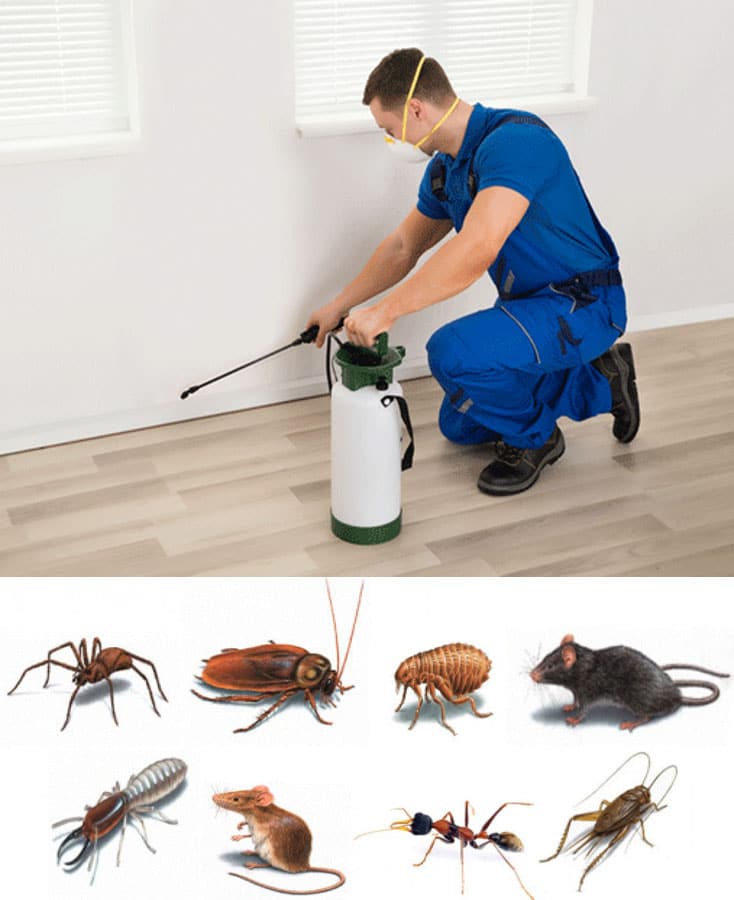A1 Bed Bug Exterminator Charlotte - Effective and Affordable Services
A1 Bed Bug Exterminator Charlotte - Effective and Affordable Services
Blog Article
Bed Bug Therapy Break Down: Comparing Chemical Vs. Non-Chemical Solutions
In the realm of pest control, especially when handling the persistent problem of bed insects, the selection in between chemical and non-chemical therapy options can be a pivotal one. Both techniques provide distinct benefits and downsides, influencing factors such as performance, safety and security factors to consider, and overall cost. By examining the nuanced details of each technique, a more clear understanding of which course to pursue in dealing with a bed insect infestation can be attained.
Efficiency of Chemical Therapies
Chemical treatments for bed pest invasions have actually been widely recognized for their fast and potent efficacy in eradicating these insects. When considering the effectiveness of chemical therapies, it is essential to understand that they can give a detailed and fast service to a bed insect trouble. Professional pest control experts usually count on pesticides to target bed insects at different phases of their life cycle, including nymphs, eggs, and adults. These chemicals normally function by disrupting the bed insects' worried system, causing paralysis and eventual fatality.
Additionally, chemical treatments have the benefit of providing recurring effects, suggesting that they can continue to get rid of bed pests also after the initial application. This recurring activity is particularly valuable in combating any prospective re-infestations. Furthermore, the quick action of chemical treatments can bring relief to individuals encountering severe bed pest invasions, permitting them to restore control of their living rooms rapidly.
Safety Interest In Chemical Solutions
One important facet that requires careful consideration when utilizing chemical solutions for bed bug therapy is ensuring the safety of owners and the setting. Direct exposure to certain chemicals used in bed bug treatments can lead to respiratory system concerns, skin irritability, or various other adverse responses, specifically in individuals with pre-existing conditions or level of sensitivities.
In addition, the ecological influence of chemical options is one more significant factor to consider. Some chemicals used in bed pest treatments might be harmful to useful insects, wild animals, and communities if they leach right into the soil or water systems. It is vital to make use of chemical therapies judiciously, adhering to safety and security standards, and thinking about less poisonous options to mitigate these threats and guarantee the safe and reliable monitoring of bed insect infestations.
Advantages of Non-Chemical Approaches
Taking into consideration the possible safety and security concerns and ecological influence linked A1 pest control services charlotte with chemical solutions for bed bug treatment, exploring non-chemical techniques offers an encouraging choice with numerous distinctive advantages. Non-chemical treatments are environmentally friendly, as they do not add to air or water contamination, making them a lasting option for pest control.
In addition, non-chemical solutions can be efficient in targeting bed bugs, including hard-to-reach areas where chemical therapies might not pass through. Methods such as warm treatment, vacuuming, steam cleansing, and bed mattress coverings supply comprehensive removal without making use of hazardous chemicals. In addition, non-chemical techniques can be less disruptive, calling for marginal prep work and allowing for quicker reentry right into dealt with areas. Generally, deciding for non-chemical bed bug therapy approaches not only prioritizes safety and ecological defense however also ensures efficient and comprehensive parasite control.
Limitations of Non-Chemical Treatments

Furthermore, non-chemical treatments frequently call for several applications to achieve effective eradication. This can be lengthy and may not always guarantee complete elimination of all bed pests and their eggs, specifically in concealed or hard-to-reach locations.
Additionally, the success of non-chemical treatments heavily counts on correct application and thoroughness, which can be testing for people without specialist proficiency. Poor application of non-chemical methods might result in incomplete eradication, bring about persistent problems and the need for extra treatments.
As a result, while non-chemical treatments have their benefits, it is vital to recognize these limitations and consider them when determining one of the most effective technique for taking care of bed bug invasions.
Price Comparison: Chemical Vs. Non-Chemical Options
Offered the constraints associated with non-chemical treatments, a necessary element to assess in the context of bed bug monitoring is the price contrast in between chemical and non-chemical alternatives. In comparison, non-chemical treatments like heat treatment or heavy steam can be a lot more expensive, with prices varying from $1,000 to $6,000 for an entire home. While the preliminary cost of chemical therapies might seem lower, multiple treatments may be called for to completely eradicate the problem, possibly enhancing the total expense.
Conclusion

Considering the potential safety concerns and ecological effect associated with chemical solutions for bed insect treatment, discovering non-chemical techniques offers an appealing alternative with numerous distinct advantages.Provided the constraints connected with non-chemical therapies, an essential aspect to review in the context of bed insect management is the expense contrast between chemical and non-chemical alternatives. In contrast, non-chemical therapies like warm therapy or steam can be extra pricey, with prices varying from $1,000 to $6,000 for an entire home. While the first cost of chemical therapies might seem reduced, numerous treatments might be required to completely get rid of the invasion, possibly boosting the total cost.In final thought, when comparing chemical and non-chemical bed pest treatment alternatives, it is crucial to think about performance, safety, benefits, constraints, and price.
Report this page